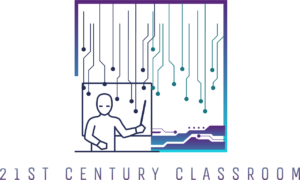Collaborative endeavors have become a cornerstone of success in today’s rapidly evolving world. As boundaries blur and challenges grow more complex, the power of collaboration has emerged as a driving force behind innovation and progress. This blog explores the significance of building bridges between individuals, teams, and organizations, delving into the transformative impact of collective efforts.
Section 1: The Power of Collaboration
Collaborative endeavors, once confined to traditional team dynamics, have evolved into cross-disciplinary, cross-industry partnerships. Examples like the International Space Station highlight the remarkable outcomes possible when brilliant minds collaborate across borders. The benefits of collaboration extend beyond knowledge sharing and resource optimization, spurring creativity and fueling breakthroughs that shape our future.
Section 2: Breaking Down Silos for Better Results
Silos, often seen within organizations, hinder the flow of information and stifle innovation. Breaking down these barriers requires open communication, cross-functional teams, and shared objectives. Consider Apple’s integration of hardware and software teams, which led to revolutionary products like the iPhone. Overcoming silos fosters synergy, enhancing efficiency and enabling innovative problem-solving.
Section 3: Navigating Challenges in Collaborative Projects
Collaboration presents challenges like miscommunication, clashing priorities, and diverse work cultures. Active listening and clear project management mitigate these issues, ensuring everyone’s voice is heard. Pixar’s success with films like Toy Story stems from a culture of openness where ideas are freely exchanged, contributing to finely-tuned narratives that captivate audiences.
Section 4: Technology as a Facilitator of Collaboration
Technology is a driving force behind modern collaboration. Virtual meetings, cloud-based tools, and online communities bridge geographical gaps and connect diverse minds. GitHub, a platform for collaborative software development, exemplifies how technology can democratize teamwork, enabling global contributions and accelerated innovation.
Section 5: The Role of Leadership in Fostering Collaboration
Leaders play a crucial role in nurturing collaboration. Effective leaders model behaviors such as active listening, empathy, and transparent communication. Google’s former CEO, Eric Schmidt, emphasized a flat organizational structure, encouraging every employee to contribute their ideas, fostering a culture of collective problem-solving.
Section 6: Success Stories: Collaborative Endeavors that Made a Difference
The success stories of collaborative endeavors are as diverse as they are inspiring. SpaceX’s partnership with NASA redefined space travel, reducing costs and expanding possibilities. In the humanitarian realm, organizations like Doctors Without Borders unite medical professionals worldwide to provide aid in crisis zones. These stories underscore that collaboration transcends industries, leaving lasting impacts.
Section 7: Building Bridges Beyond Boundaries
Collaboration’s reach extends beyond geographical borders. Initiatives like the Paris Agreement showcase global cooperation in addressing climate change. These ventures require cultural sensitivity, adaptable communication, and a shared commitment to overcome differences. Collaborative projects on a global scale exemplify our collective responsibility to create a better world.
Takeaway
Building bridges through collaborative endeavors unleashes the latent potential within individuals, teams, and societies. As we harness the power of collective knowledge, innovation, and purpose, we pave the way for a brighter future. Embracing collaboration offers boundless opportunities to create positive change and drive progress in an interconnected world.

